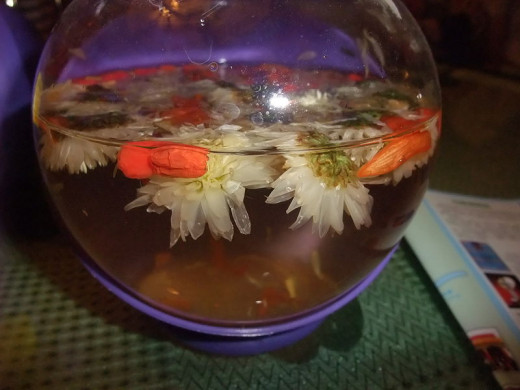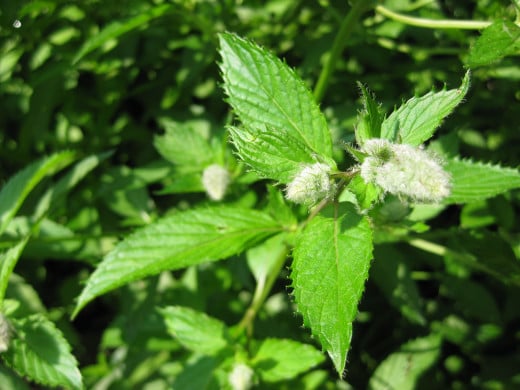How to Make Your Own Herbal and Fruit Teas.

Today herbal and fruit teas are available to buy in many places and there are varieties to suit all tastes and occasions. These can be bought as loose teas or as tea bags just as regular tea is sold. It is also fairly easy to make herbal and fruit teas at home using fresh and dried ingredients and the process also needs very little in the way of tools or equipment. Ingredients can be bought, foraged or if you have a garden or small outdoor space grown at home. It is even possible to grow some herbs on a warm windowsill. If you wish to grown or forage your own ingredients these can also be dried and stored for later uses.
Teas can be made using leaves, roots, stems, flowers and fruit of a wide range of plants and herbs and is an art that can be traced back through thousands of years. Homemade teas can be created to suit your own tastes and needs and in appropriate amounts. If you already have or through trying various teas, find a favourite you can make batches of the recipe ready for use at any time.
Homemade teas are not at all hard to make and many people find that the taste is far superior to bought versions. There is also less worry about what may have been added to the tea or how fresh they are, particularly if you grew or foraged the ingredients yourself. Even if you need to buy ingredients, making your own teas means that you will know where there ingredients came from and will be able to source good fresh and in many cases local produce.

There is a huge list of plant materials that are suitable for making teas. Examples of these include:
- Rosemary
- Lavender
- Cinnamon
- Citrus peels
- Valerian
- Berries
- Sliced fruits
- Ginger
- Dandelion leaves and flowers
- Nettle
- Blackberry leaves
- Lemon balm
- Mint
- Parsley
- Sage
- Liquorice root
- Chamomile
- Elderberry flowers and berries
- Anise
- Rose hips
How to Make Your Own Tea Blends
Making teas is a very simple process and can be carried out in several ways. The simplest way to make a herbal tea is to collect together the required ingredients in a heat proof container. The required amount of boiling water can then be poured over this and left for 5-10 minutes depending on how strong you wish the tea to be. After his time the liquid can then be strained and reserved to be drunk hot or cold. The amount of plants, fruits or herbs needed will depend on how strong a flavour you wish to achieve of each ingredient and so you can experiment with this or follow and adapt existing recipes. When making tea for one drink, the seeping process can be done in the mug or cup you intend to drink from if desired.
Alternatively the plant materials can be secured in a small square of muslin or cheesecloth and then placed into a cup of boiling water. A simple way to do this is to cut a small square of muslin and place all the ingredients into the centre. Now gather up the edges of the fabric to create a small bundle. Tie some string around the gathered edges to secure. This can then be used in the same way as a bought tea bag and you could even prepare several of your favourite tea blends in advance.
You can also use a bought tea strainer or infuser to make teas directly in the drinking mug and disposable one cup filters are also available to buy for making teas using loose materials.

Tips for Creating Flavourful Teas
1. Always use glass or china vessels when preparing your teas. Some ingredients can react with metals or plastic and taint the flavour of the finished tea.
2. Ensure that your kettle is clean otherwise this may also taint the flavour of the tea. Alternatively you could boil water in a pan. Water should be freshly boiled no re-boiled and only boil as much as you need as this will conserve water and energy.
3. Teas can be made using spring or filtered water if preferred.
4. Ideally make your teas when you intend to drink them. If left in water for a long time some herbs can produce a bitter taste and spoil the flavour. If you wish to make more than one cup of tea at once, seep the plants and then strain rather than leaving them in the water.
5. Blends of herbs, dried fruits, leaves and other dry materials can be made in advance and kept in an airtight container for several months. These should be stored in a dry dark place or in a container that will keep out light.
6. Herbal and fruit teas can also be drunk chilled. These should be stored covered in the refrigerator.
Recipes
Ginger Peppermint Tea
Makes 8fl oz
1 ½ inches of fresh ginger root
2 tbsp fresh peppermint leaves
1. Slice the ginger root thinly and tear the peppermint leaves.
2. Place the ginger and peppermint leaves into a suitable container or mug.
3. Pour over freshly boiled water and leave to seep for 4-5 minutes before straining.
Relaxing Tea Blend
1 cup of lemon balm leaves
¼ cup of valerian root, finely chopped
1 cup of chamomile leaves
1 tbsp ginger root, finely chopped
1. Place all the ingredients into a glass jar that has a tight fitting lid.
2. To brew the tea, place 1 tbsp of the herb mixture into a cup or mug and pour over 1 cup of boiling water.
3. Strain the tea and drink.
Study Tea
This tea can be used to help clear your thoughts and focus on your studies.
1 tsp rosemary
1 tsp lemon balm
½ tsp basil
Zest of ½ lemon
1 tsp of grapefruit zest
1. Place the ingredients into a suitable container and pour over half a pint of boiling water.
2. Allow to seep for 8-10 minutes before straining.
Tea to aid Digestion
2 tsp camomile flowers
1 tsp peppermint leaves
1 tsp fennel seeds, slightly crushed
1. Place the ingredients into a suitable container and pour over half a pint of boiling water.
2. Allow to seep for 8-10 minutes before straining.
© 2014 Claire








